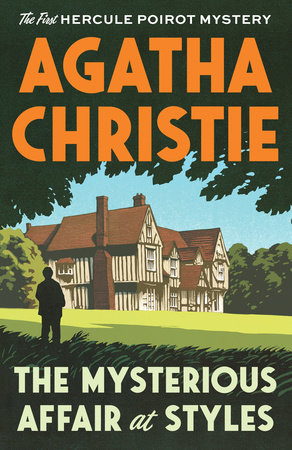The Mysterious Affair at Styles Reader’s Guide
By Agatha Christie


1. According to Agatha Christie, when she wrote The Mysterious Affair at Styles she saw it as “a story with a moral; in fact it was the old Everyman Morality Tale, the hunting down of Evil and the triumph of Good. At that time, the time of the 1914 war . . . we had not then begun to wallow in psychology.” How is this re-ected in the characters who populate the novel? Did you find them realistic, or did you think they were stereotypical? Did you identify with any of them, and if so, who?
2. When Hastings describes his reaction to the bucolic village of Styles St. Mary he observes, “It seemed almost impossible to believe that, not so very far away, a great war was running its appointed course. I felt I had suddenly strayed into another world.” What other references to World War I can you recall from the novel?
3. How would you describe the Edwardian social hierarchy that Christie establishes in the novel? Who is on the top of the ladder, and who is on the bottom? Does anyone break the rules of this well-defined social order?
4. What role do outsiders play in The Mysterious Affair at Styles? Consider, in particular, the characters of Alfred Inglethorp, Dr. Bauerstein, and Hercule Poirot.
5. According to Brewer’s Dictionary of Phrase & Fable, a red herring is “a hint or statement in the early part of the story to put the reader on the wrong scent” (derived from the practice of dragging a smelly red herring across a path to confuse hunting dogs). How many red herrings can you find in this mystery?
6. Captain Hastings admits to Mary Cavendish that he has always harbored a secret desire to become a detective in the tradition of Sherlock Holmes. Compare Poirot and Hastings to Holmes and Watson. What do these two detective teams have in common? How do they differ?
7. According to the critic Anthony Lejeune, “The real secret of Agatha Christie . . . lies not in the carpentering of her plots, excellent though that is, but in . . . [her] ability to buttonhole a reader, to make, as Raymond Chandler put it, ‘each page throw the hook for the next.’ ” How does Christie build suspense in this novel? Were you surprised when the true murderer was revealed?
8. Hercule Poirot, the five-foot-four, egg-headed, brilliant Belgian detective who made his first appearance in The Mysterious Affair at Styles, is the hero of more than thirty novels and fifty short stories by Agatha Christie. What makes him such an appealing and enduring character?
9. How do Agatha Christie’s novels compare with the works of today’s mystery writers, such as Elizabeth George, Sue Grafton, Janet Evanovich, and Anne Perry?
Just for joining you’ll get personalized recommendations on your dashboard daily and features only for members.
Find Out More Join Now Sign In